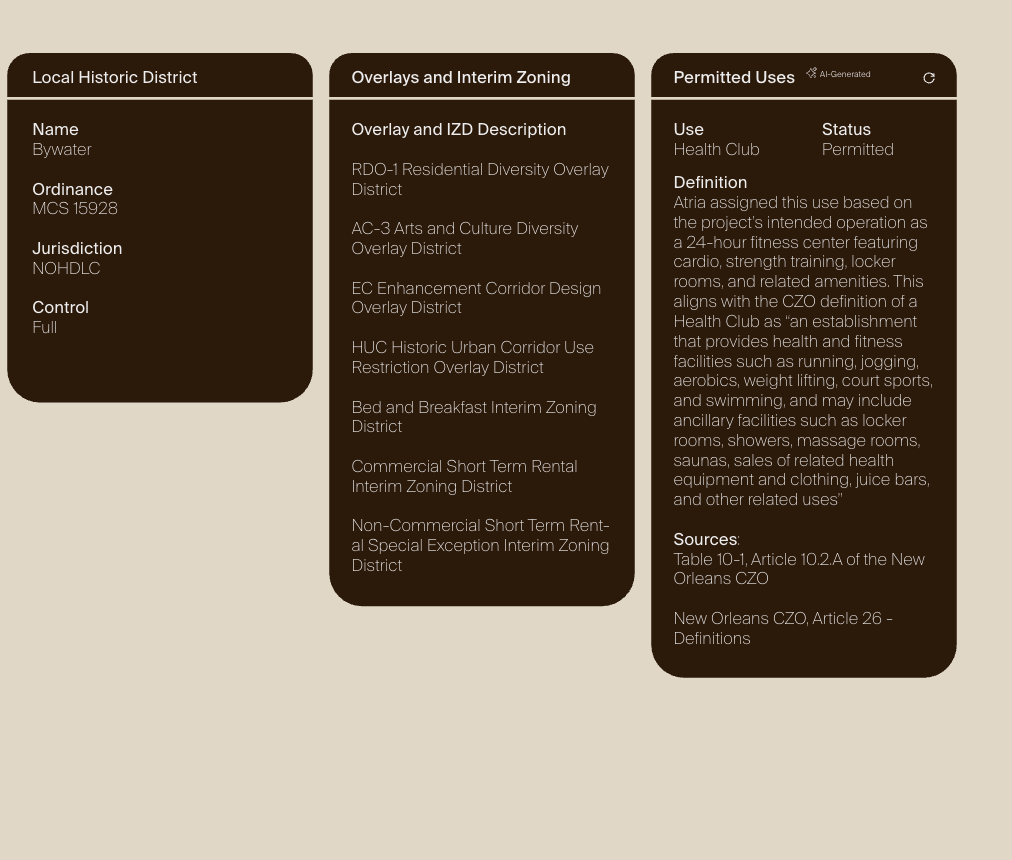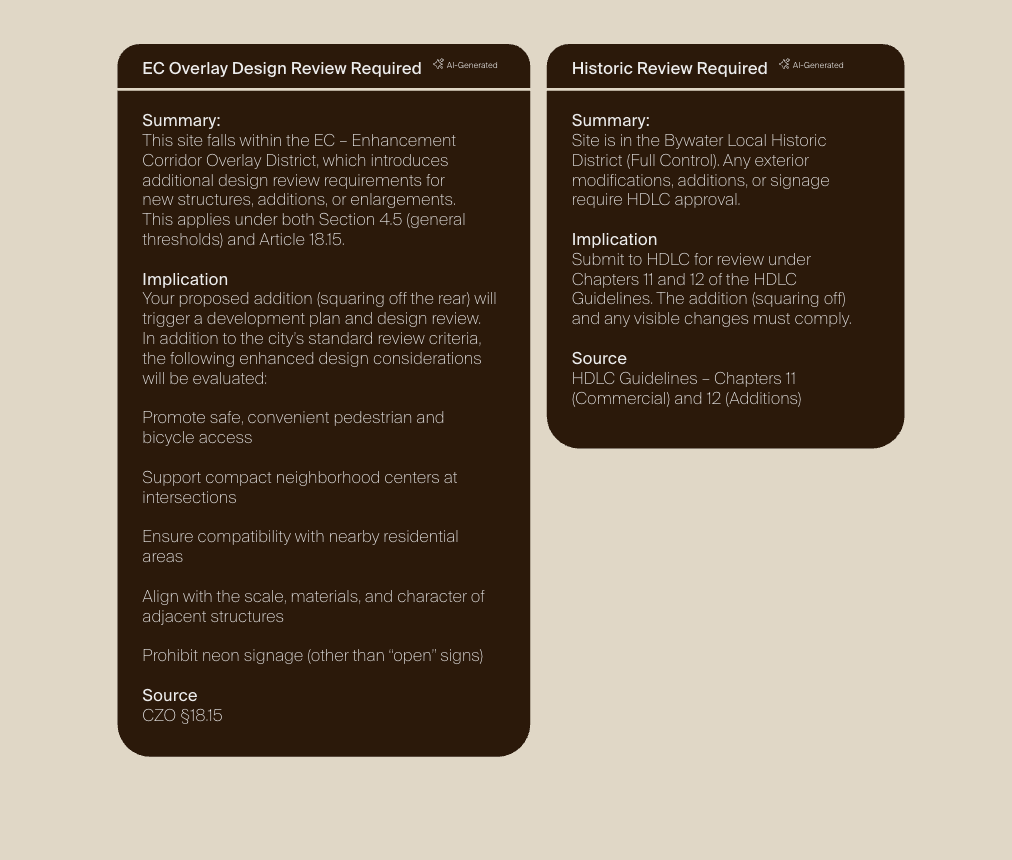
Field NotesUntangling a Complex
Zoning Site with AI
Field Notes: Observations on AI in Architecture
One of the best parts about building Atria has been the conversations. I've had the chance to connect with architects around the world, trading stories about practice, early experiments with AI, and the friction points we keep running into. Over time, I've come to realize those conversations are worth sharing—not to promote technology, but to build a sense of camaraderie. This piece is the first in a series of short reflections. Some are mine, some are borrowed. All are focused on how our tools are changing and what that means for how we work.
01 — The Ground Conditions of Practice
Living in New Orleans for nearly a decade has taught me how much place matters. The neighborhoods aren't just geographic boundaries. They carry identity, memory, and a distinct sense of character. You don't need to be a native to notice it, but you probably do need time here to appreciate how layered it is.
The city's zoning reflects that layering. Overlay districts attempt to preserve what makes each neighborhood distinct, not just architecturally, but culturally. In principle, it's thoughtful. In practice, it can be difficult to work with.

Atria's visualization of overlay districts on the St. Claude Avenue property
That tension between intention and usability is where I think AI can play a real role. As both an architect and someone building Atria, I see AI as a partner in the work. It can help us navigate the regulations that protect the character of our neighborhoods and make it easier to see the full landscape upfront.
A few weeks ago, I ran a feasibility study for a client interested in converting a commercial property on St. Claude Avenue into a gym. On the surface, the project seemed straightforward. But the site was layered with zoning rules, overlay districts, interim controls, and historic review requirements. Each came with its own implications and approval thresholds. It was enough to stall progress before it even began.
I used Atria to run the analysis. The tool identified every relevant district, flagged key restrictions, and cited the sources directly from the code. What would normally take hours to piece together became clear, organized, and actionable.

Atria's feasibility analysis showing key restrictions and compliance requirements
The complexity didn't go away. But it stopped being invisible.
That is the role I believe AI can play. Not to decide for us, but to help us understand the ground we're standing on. When we can see everything upfront, we spend less time untangling the rules and more time doing the work we came here to do.
I'll keep sharing what I learn along the way.
Better tools for a better built world
Join us at Atria in shaping the future of architecture and
engineering with AI-powered tools that enhance creativity, efficiency, and precision.